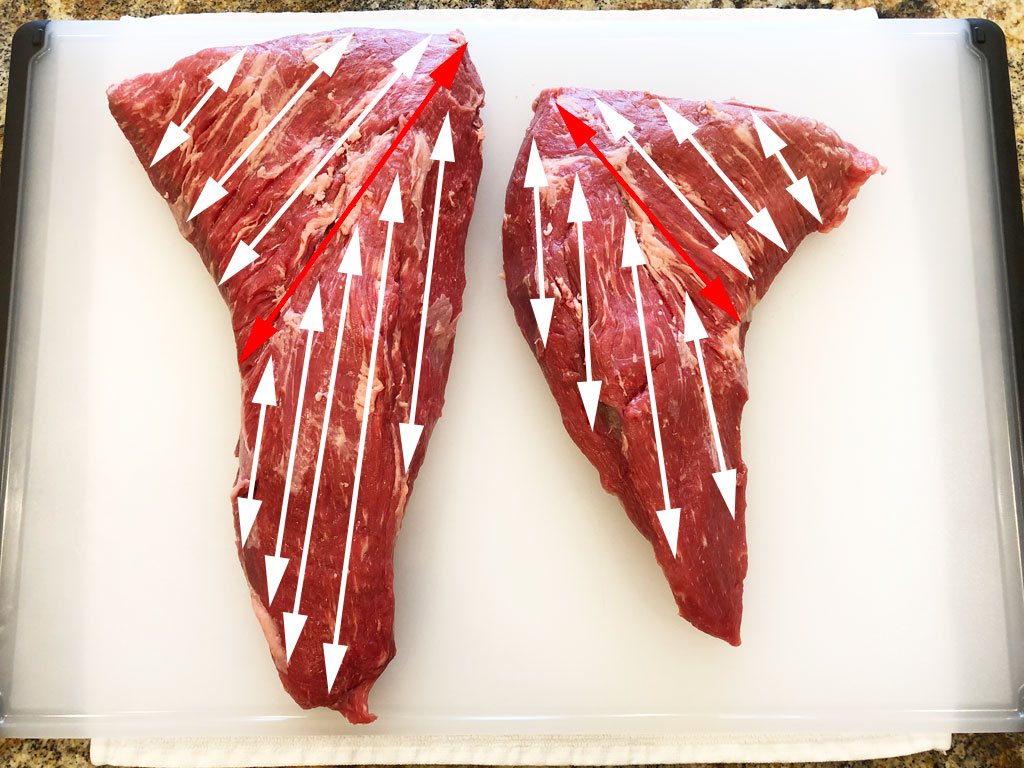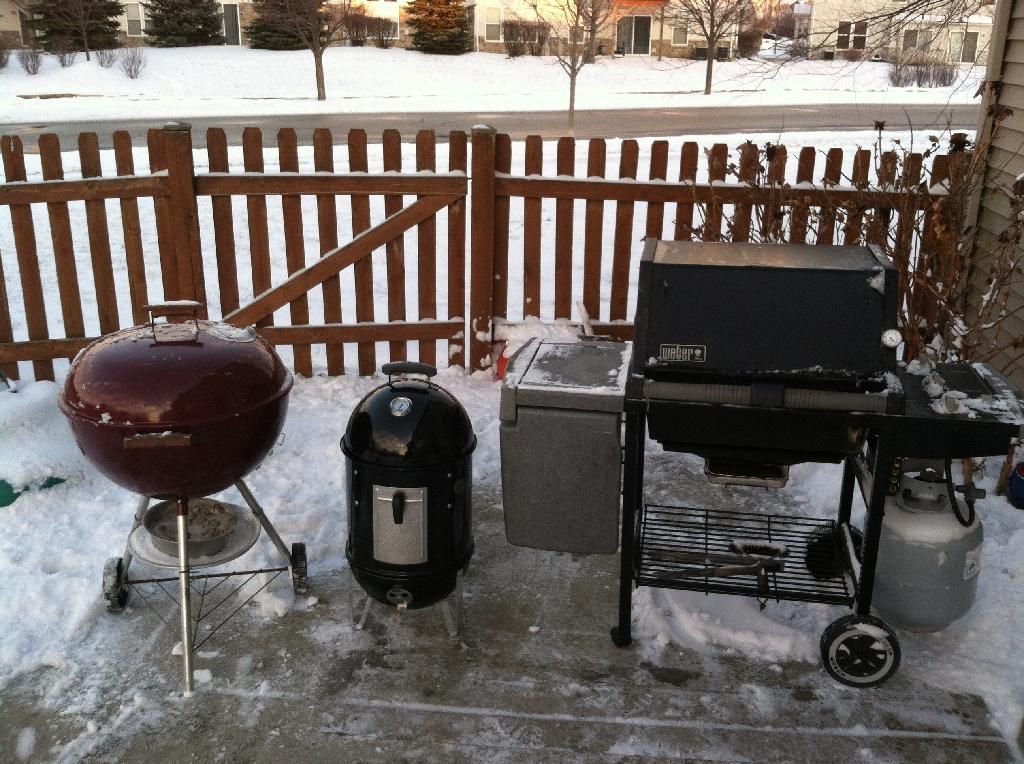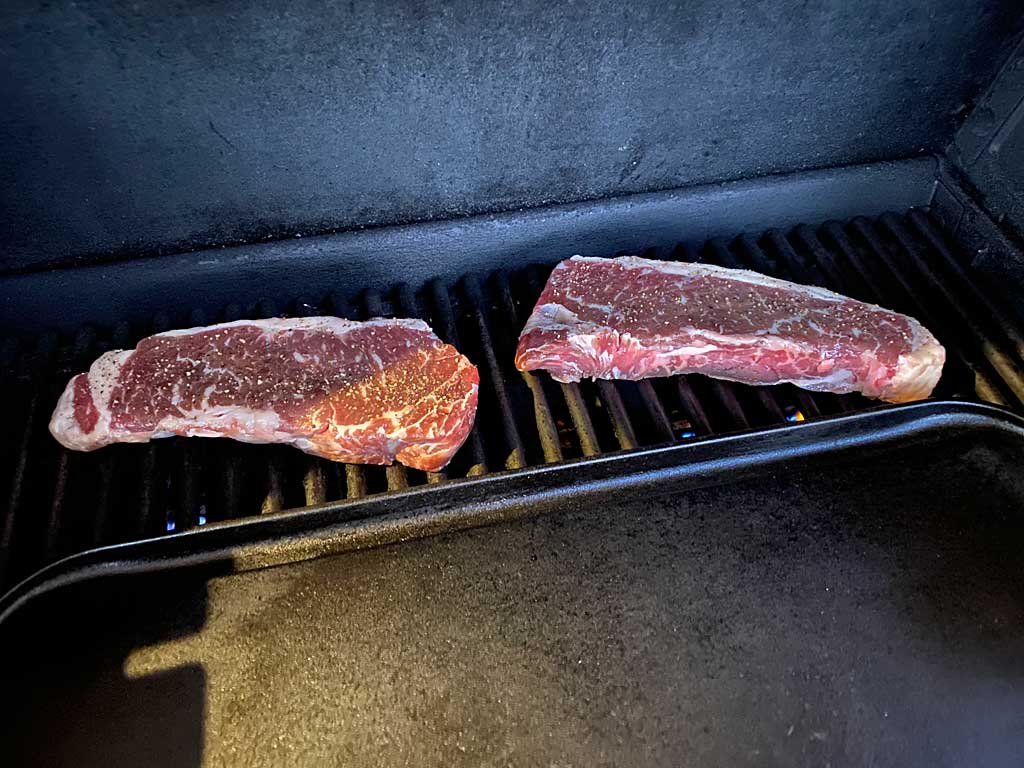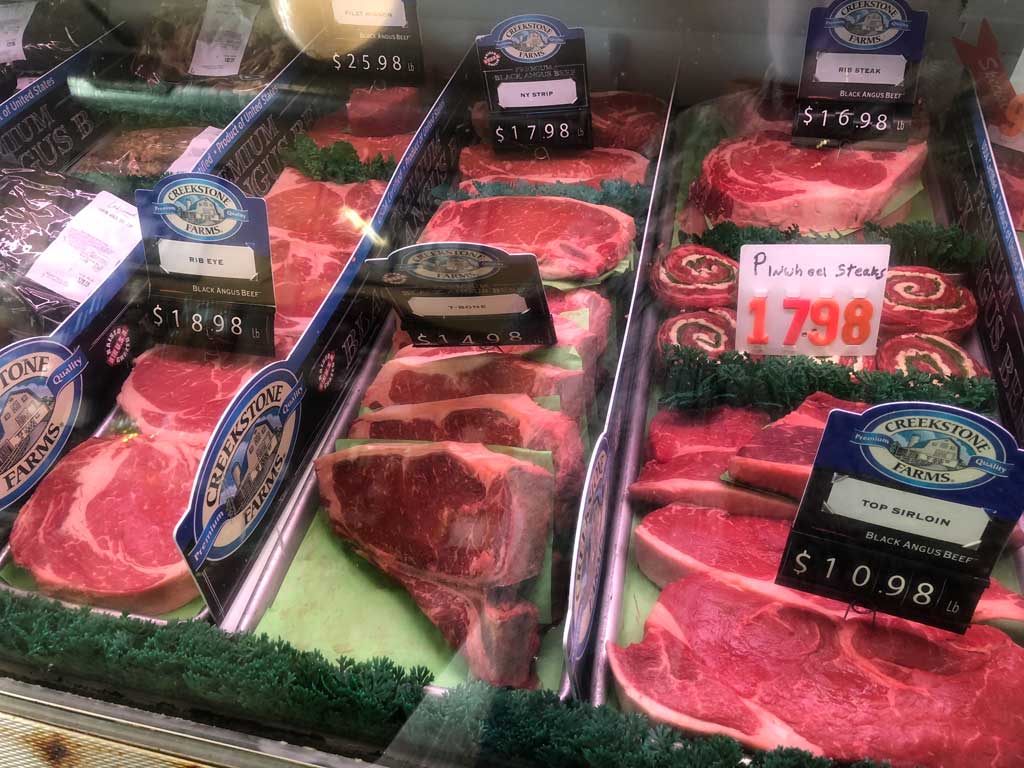This beginner’s video explains and demonstrates what slicing meat across the grain is all about, featuring 13 different cuts of meat including flank steak, skirt steak, tri-tip roast, teres major, NY strip steak, ribeye steak, flat iron steak, pork tenderloin, brisket flat, chicken breast, and more. Continue reading Video: Slicing Meat Across The Grain For Beginners
Category Archives: Tips & Techniques
Video: Using Non-Stick Cooking Spray for Grilling
Non-stick cooking spray is my secret to prevent meat from sticking to the stainless steel cooking grates in my Weber gas grill and smoker. I know some people have this same issue with their stainless steel grates and can’t figure out how to resolve the problem—this video is for them!
Watch this video for some helpful tips on using non-stick cooking spray next time you grill or barbecue in the backyard!
Questions & Comments
Since I first published this video, I’ve received several questions and comments I’d like to address. Continue reading Video: Using Non-Stick Cooking Spray for Grilling
How To Trim Silverskin From Pork Tenderloin
I recently published this video demonstrating how to trim silverskin from pork tenderloin. I followed this process for the pork tenderloin recipes I’ve posted on this site, including Grilled Teriyaki Pork Tenderloin and Pork Tenderloin Steaks.
And it’s the same process whether you’re trimming a beef tenderloin or even the teres major steak I wrote about in my last post. Continue reading How To Trim Silverskin From Pork Tenderloin
Winter Grilling Tips
Here are some useful tips for winter grilling in cold weather.
Pre-Cook
- Keep plenty of propane around. Consider keeping a filled spare tank in reserve. Tanks may not work reliably when temps dip below freezing, so store propane tanks where they won’t freeze.
- Wind is the enemy of grilling, regardless of time of year. Operate your grill in a sheltered location or setup a wind break.
- Allow more time to pre-heat the grill. It may take up to twice as long to pre-heat during winter than during summer.
- Don’t force the lid or knobs if frozen in place. Thaw the grill in the garage or carefully defrost stuck parts with a blow dryer.
- To avoid carbon monoxide risks, don’t operate your grill in enclosed locations.
Reverse Searing NY Strip Steaks From Creekstone Farms
In a post from earlier this year, I mentioned visiting Lakewood Meats in Lodi, CA where I purchased some quality Creekstone Farms steaks. In that post, I reverse seared ribeye steaks in a cast iron skillet and concluded by saying, “It’s easier getting steaks on and off a cast iron griddle vs. a cast iron skillet, so next time I’ll use my griddle instead.”
Well, last weekend I found two Creekstone Farms NY strip steaks from Lakewood Meats at the back of the freezer and did the reverse sear on them, too, but this time finishing on the griddle.
This video summarizes the process: Continue reading Reverse Searing NY Strip Steaks From Creekstone Farms
Reverse Seared Cast Iron Skillet Ribeye Steaks
I picked up a couple of high quality Creekstone Farms ribeye steaks at Lakewood Meats in Lodi, CA while in town judging a barbecue contest.
These steaks were about 1″ thick. I wish they’d been 1-1/2″ thick, which would have been a better thickness for the reverse sear cooking method used here.
I sprinkled the steaks with kosher salt on both sides and refrigerated them on a cooling rack over a rimmed baking sheet pan for 2 hours. Right before grilling, I applied freshly ground black pepper to both sides and pressed it on with my hands.
I setup the Summit 450 gas grill for indirect cooking, with two burners OFF on the left side and two burners on HIGH on the right side. I placed a 12″ cast iron skillet on the hot side of the grill to pre-heat.
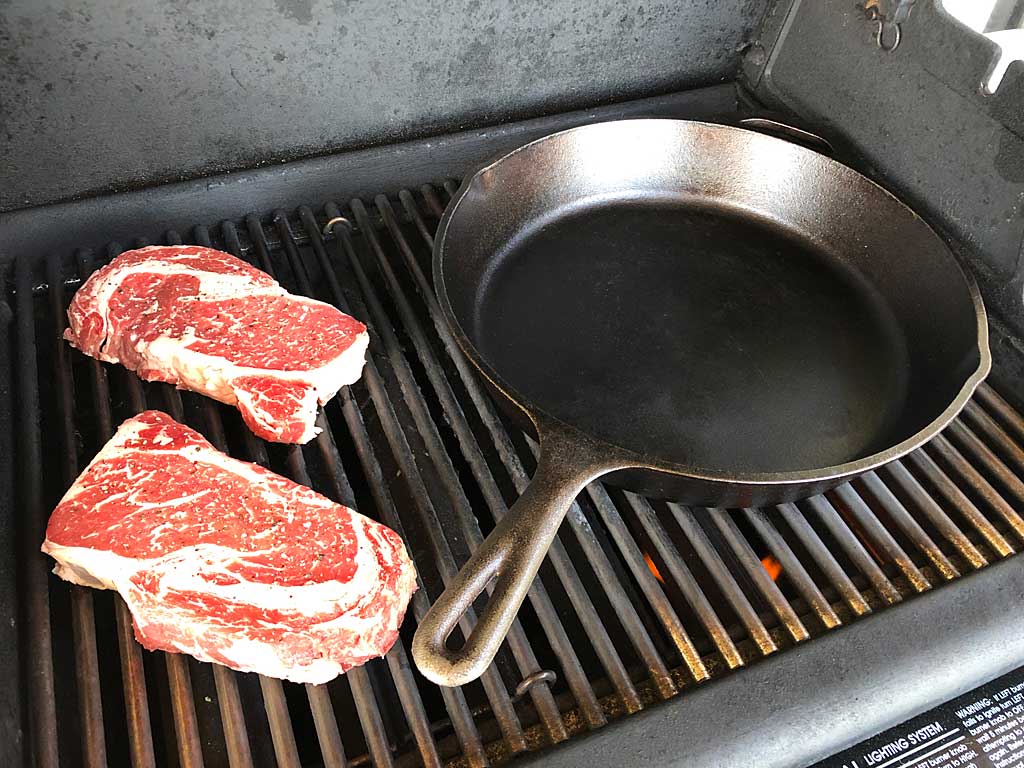 Continue reading Reverse Seared Cast Iron Skillet Ribeye Steaks
Continue reading Reverse Seared Cast Iron Skillet Ribeye Steaks
Skirt Steak: Part 2
In a previous post, I wrote about the two types of skirt steak—outside skirt steak and inside skirt steak—and showed an example of grilling inside skirt steak with a spicy Korean marinade on my Weber Summit 450 gas grill.
In that post, I casually mentioned that both cuts of skirt steak can be a very long piece of meat (especially the more desirable outside skirt steak) and that it can be advantageous to cut it into smaller pieces before marinating and grilling.
I wanted to show you an example of a really long piece of outside skirt steak, one that I bought recently at a quality butcher counter here in San Jose. Continue reading Skirt Steak: Part 2
Using A Probe Thermometer & Instant-Read Thermometer Together
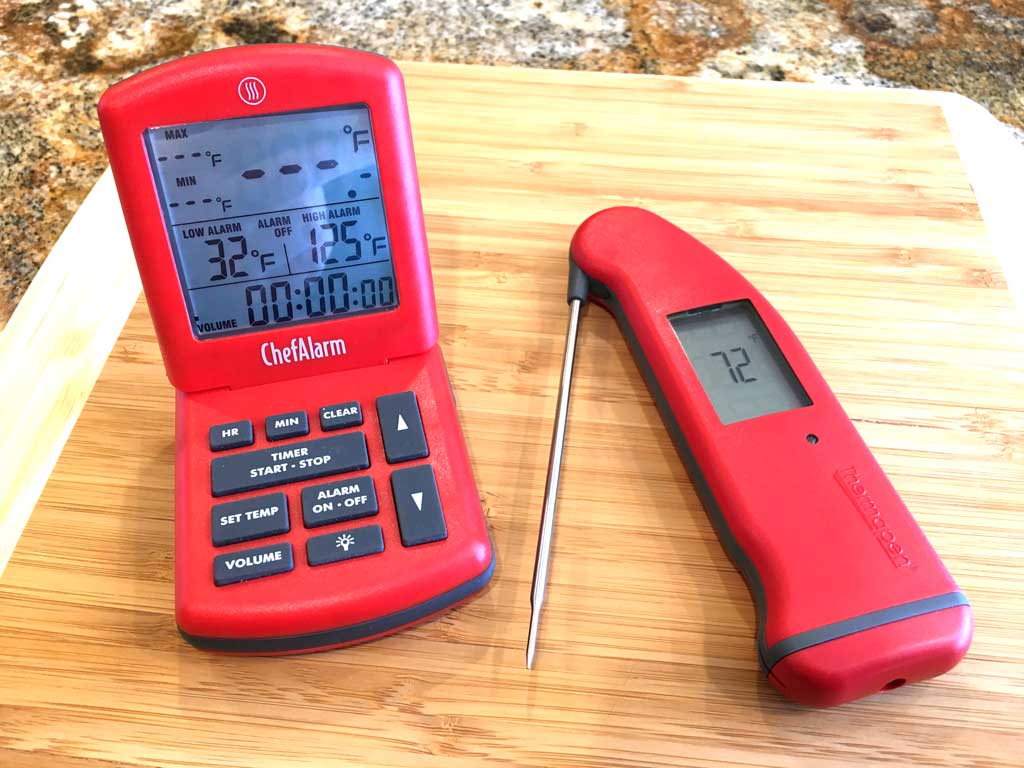
It may not seem intuitive at first, but when grilling large cuts of meat, it can be helpful to use both a probe thermometer and an instant-read thermometer to measure internal meat temperature.
Continue reading Using A Probe Thermometer & Instant-Read Thermometer Together
Troubleshooting Low Heat or Weak Flame on Weber Gas Grills
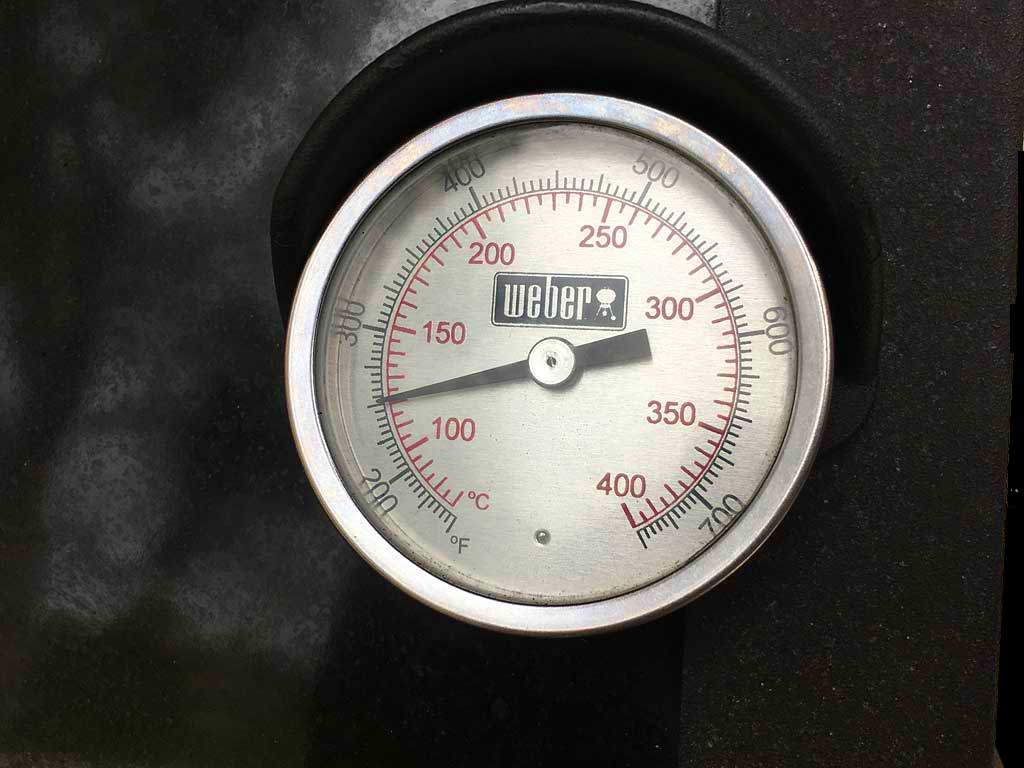
You fire-up your Weber gas grill and it’s not coming up to temp like it normally does and the flames don’t look right. Here are the things you should be looking at to troubleshoot and solve this problem.
Check The Fuel Level
If the heat and flame pattern in your grill seem low and you’ve got a propane grill, your first instinct is probably to check the fuel level of the tank. That’s a good start…maybe it’s time for a propane tank refill.
Clean Or Replace The Burners
Remove the cooking grates and Flavorizer bars and check the condition of the burners. They may be clogged with cooking debris or corrosion. The burner holes can usually be cleaned and cleared and returned to good working order. In the worst case scenario, the burners may need to be replaced. You should also check the spider screens to make sure nothing is blocking them.
Continue reading Troubleshooting Low Heat or Weak Flame on Weber Gas Grills
The Toast Test: Visualizing Your Grill’s Hot Spots
The Toast Test is a great way to visualize any hot spots on your gas grill’s cooking surface. I’ve known for some time that my 2002 Weber Summit 450 4-burner gas grill has some hot spots…I grill a bunch of burgers and some seem to cook faster than others. In fact, I may end up overcooking a few burgers in the process. You’d think I would know the quirks of my grill, having cooked on it for almost 15 years, but I keep making the same mistakes over and over again.
I saw the toast test performed on an episode of America’s Test Kitchen and I tried it on my Weber Summit.
Continue reading The Toast Test: Visualizing Your Grill’s Hot Spots

